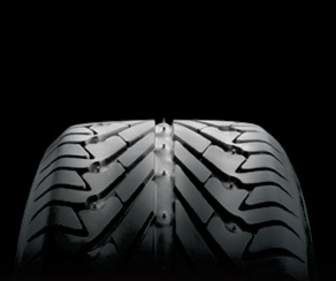Retractable studs have Legislature rethinking state’s ban
Published 4:00 am Friday, February 9, 2007

- Retractable studs have Legislature rethinking state's ban
SALEM – Push a button, and voila! You have studded tires.
Push it again, and they’re gone.
The idea of retractable studs on traction tires may sound like something out of a James Bond movie – but the technological gizmos could soon be en route to retailers. And that’s nudging legislators to reconsider Oregon’s ban on the tires after the snow melts.
”The product is coming on the market and if you have them, you should be able to use them all year long,” said State Rep. Terry Beyer, D-Springfield, the chairwoman of the House Transportation Committee.
Studded tires have long been a source of disagreement among state lawmakers because, while the metal cleats make driving safer on icy roadways, they also scour pavement. The state spends more than $10 million annually to repair stud-caused ruts, according to Oregon Department of Transportation figures.
That damage has helped spur legislation to assess fees for studded tire users, but previous bills stalled because they were criticized as a tax on safety for residents on Oregon’s colder east side.
Meanwhile, much of the state’s stud wear is on the heavily traveled Interstate 5 corridor in the Willamette Valley, where freezing conditions are rare.
The retractable-stud tires are being developed by South Carolina-based Q Tires Inc., a company that got its start in Oregon and recently added retired Les Schwab Tire Centers executive Rich Priday, of Prineville, to its board of directors. A manufacturing facility is under construction in China, according to the firm’s Web site.
Cindy Robert, the lobbyist for the company, said the tires will cost more than normal versions – but will be less expensive than buying two sets of tires, which is commonplace in Central Oregon, where many rotate between studded models in winter and normal ones in warmer months.
The tires have a second air chamber near the rubber surface that, when filled via a remote control on the drivers’ dashboard, pushes the studs out beyond the treads, she said.
The state now bans studded tires between April 1 and Nov. 1. House bill 2567, introduced this week, would allow drivers to keep retractable stud tires on their vehicles year-round, but would allow studs to be extended only during winter months.
”We can’t come to an agreement about preventing the road damage,” said House Transportation Committee Vice Chairman George Gilman, R-Medford, who has spent plenty of time driving in the snow because his district extends across the Cascades into Lake and Crook counties.
”But if the studs are retracted except when it’s icy, then road damage will be less of a problem,” he said.
Prineville-based Les Schwab Tire Centers warehouse, which handles the product purchasing for the Les Schwab Tires chain, has not decided whether to sell the Q Tires brand.
”At this stage we don’t know enough about the product to know whether it is a good fit for our winter lineup, but we are always evaluating new products,” company spokeswoman Jodie Hueske said.
Retractable studs
How does the technology work?
It enables air pressure from the main chamber of the tire to expand a secondary chamber, which lifts the studs above the surface of the tread. When road conditions no longer require studs, the air pressure is released and the studs retract below the tread face.






